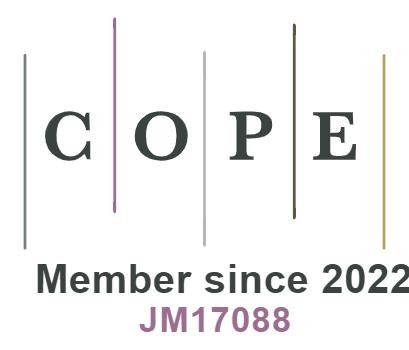REFERENCES
1. Robertson N. The future of teaching? Asimov's three laws and the hypothetical robot teacher. PRISM J 2022;4:29-40.
2. Butler JT, Agah A. Psychological effects of behavior patterns of a mobile personal robot. Auton Robot 2001;10:185-202.
3. Fragapane G, Hvolby HH, Sgarbossa F, Strandhagen JO. Autonomous mobile robots in hospital logistics. In: IFIP international conference on advances in production management systems. Cham: Springer; 2020. pp. 672-79.
4. Guo P, Shi H, Wang S, Tang L, Wang Z. An ROS architecture for autonomous mobile robots with UCAR platforms in smart restaurants. Machines 2022;10:844.
5. Hasan OA, Alhakeem ZM, Armash MK, et al. Designing smart restaurant for reopening during the relaxation of lockdown in the time of corona pandemic. In: 2022 5th international conference on information and communications technology (ICOIACT), Yogyakarta, Indonesia; 2022. pp. 301-6.
6. Wang J, Meng MQH. Path planning for nonholonomic multiple mobile robot system with applications to robotic autonomous luggage trolley collection at airports. In: 2020 IEEE/RSJ international conference on intelligent robots and systems (IROS), Las Vegas, NV, USA; 2020. pp. 2726-33.
7. Tran HT, Vo TC, Nguyen QNA, et al. A novel design of a smart interactive guiding robot for busy airports. Int J Smart Sens Intell Syst 2022;15.
8. Cheng L, Zhao N, Wu K, Chen Z. The multi-trip autonomous mobile robot scheduling problem with time windows in a stochastic environment at smart hospitals. Appl Sci 2023;13:9879.
9. Kruse T, Pandey AK, Alami R, Kirsch A. Human-aware robot navigation: a survey. Robot Auton Syst 2013;61:1726-43.
10. Nonaka S, Inoue K, Arai T, Mae Y. Evaluation of human sense of security for coexisting robots using virtual reality - 1st report: evaluation of pick and place motion of humanoid robots. In: IEEE international conference on robotics and automation, New Orleans, LA, USA; 2004. pp. 2770-75.
11. Xin L. Dynamic path planning of multiple mobile robots. 2007. pp. 1-140. Available from: http://scholarbank.nus.edu.sg/handle/10635/13405 [Last accessed on 27 Dec 2023].
12. Mateus A, Ribeiro D, Miraldo P, Nascimento JC. Efficient and robust pedestrian detection using deep learning for human-aware navigation. Robot Auton Syst 2019;113:23-37.
13. Bruckschen L, Bungert K, Dengler N, Bennewitz M. Human-aware robot navigation by long-term movement prediction. In: 2020 IEEE/RSJ international conference on intelligent robots and systems (IROS), Las Vegas, NV, USA; 2020. pp. 11032-37.
14. Hansen ST, Svenstrup M, Andersen HJ, Bak T. Adaptive human aware navigation based on motion pattern analysis. In: RO-MAN 2009-The 18th IEEE international symposium on robot and human interactive communication, Toyama, Japan; 2009. pp. 927-32.
15. Ah Sen N, Carreno-Medrano P, Kulić D. Human-aware subgoal generation in crowded indoor environments. In: Lecture notes in computer science. Cham: Springer; 2022. pp. 50-60.
16. Korkmaz M. Human-aware dynamic path planning. In: 2021 international conference on INnovations in intelligent sysTems and applications (INISTA), Kocaeli, Turkey; 2021. pp. 1-5.
17. Kollmitz M, Hsiao K, Gaa J, Burgard W. Time dependent planning on a layered social cost map for human-aware robot navigation. In: 2015 European conference on mobile robots (ECMR), Lincoln, UK; 2015. pp. 1-6.
18. Briamonte A. Human-aware robot navigation around groups in narrow spaces. 2020. pp. 1-80. Available from: http://kth.diva-portal.org/smash/record.jsf?pid=diva2%3A1470222&dswid=-8798 [Last accessed on 27 Dec 2023].
19. Sampathkumar SK, Chhabra A, Choi D, Kim D. Optimization of artificial potential field using genetic algorithm for human-aware navigation of autonomous mobile robots. In: North American fuzzy information processing society annual conference. Cham: Springer; 2023. pp. 160-71.
20. Zhang Y, Li Ll, Lin HC, Ma Z, Zhao J. Development of path planning approach using improved A-star algorithm in AGV system. J Int Technol 2019;20: 915-24. Available from: https://jit.ndhu.edu.tw/article/view/2069 [Last accessed on 27 Dec 2023].
21. Kirby R, Simmons R, Forlizzi J. COMPANION: a constraint-optimizing method for person-acceptable navigation. In: RO-MAN 2009 - The 18th IEEE international symposium on robot and human interactive communication, Toyama, Japan; 2009. pp. 607-12.
22. Khatib O. Real-time obstacle avoidance for manipulators and mobile robots. Int J Robot Res 1986;5:90-8.
23. Choi D, Kim D, Lee K. Enhanced potential field-based collision avoidance in cluttered three-dimensional urban environments. Appl Sci 2021;11:11003.
24. Mamdani EH. Application of fuzzy algorithms for control of simple dynamic plant. IET 1974;121:1585-88.
25. Choi D, Chhabra A, Kim D. Collision avoidance of unmanned aerial vehicles using fuzzy inference system-aided enhanced potential field. Reston, VA: AIAA; 2022. p. 0272.
26. Rios-Martinez J, Spalanzani A, Laugier C. From proxemics theory to socially-aware navigation: a survey. Int J Soc Robot 2015;7:137-53.
27. Wheelwright B, Sulai Y, Geng Y, et al. Field of view: not just a number. In: Digital optics for immersive displays, Strasbourg, France; 2018.







